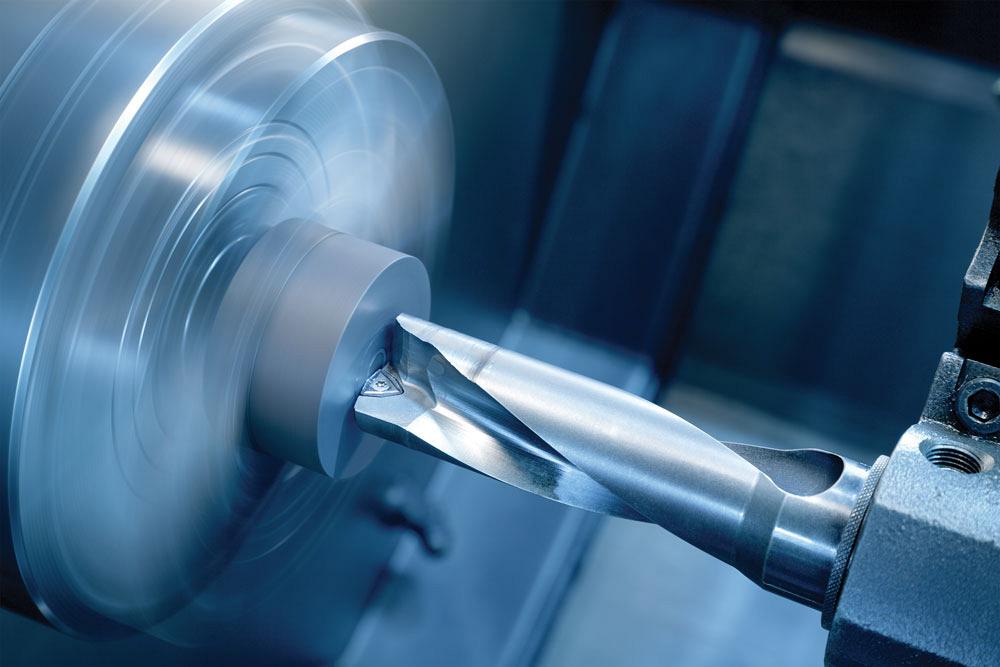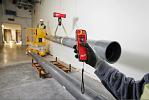- FMA
- The Fabricator
- FABTECH
- Canadian Metalworking
Researchers reduce tool wear in superalloy machining
- April 22, 2022
- News Release
- Cutting Tools

New research presents parameters that should be selected to reduce wear and improve surface integrity by optimizing cutting data.
Superalloys are difficult to machine. Despite this, they are widely used in various engineering applications, such as mechanical engineering, aircraft construction, and automotive, for their high temperature resistance and high strength properties.
However, cutting tools wear out intensively during machining, causing a deterioration in the quality of the processed surface and changing the surface topography, microstructure, and mechanical properties.
Scientists from South Ural State University (SUSU) in Russia and other universities recently conducted a study to examine the parameters that can extend tool life in the machining of superalloys. A paper summarizing the study, “A state-of-the-art review on tool wear and surface integrity characteristics in machining of superalloys,” has been published in CIRP Journal of Manufacturing Science and Technology.
SUSU scientist Danil Pimenov and his colleagues reviewed more than 200 literature sources on superalloys to investigate surface defects, surface roughness, and changes in microstructure and mechanical properties.
“We have investigated tool wear and wear mechanisms such as abrasive, adhesive, oxidative, and diffusion and [those resulting from] plastic deformation … ” said Pimenov.
The researchers considered possible options for reducing tool wear and thereby extending the tool life, as well as improving surface integrity, depending on the processing parameters, tool modification, and advanced cooling methods.
The research team has presented parameters that should be selected to reduce wear and improve surface integrity by optimizing cutting data.
They found that tool tip texturing is a very promising technology with the potential to reduce wear and improve surface integrity. Flood cooling machining protects the cutting edge of the tool well from intense wear and improves surface integrity. Hybrid use of minimum-quantity lubrication and cryogenic lubrication also can be beneficial for work processes and environmental protection.
This paper was prepared by Dr. Murat Sarıkaya (Sinop University, Turkey), Dr. Munish Gupta and Professor Grzegorz Krolczyk (Opole University of Technology. Poland), Dr. Italo Tomaz (Waterford Institute of Technology, Ireland), senior lecturer Danil Pimenov (South Ural State University, Russia), Dr. Mustafa Kuntoglu (Selcuk University, Turkey), Dr. Navneet Khanna (Institute of Infrastructure Technology, India), and Dr. Çagrı Yıldırım (Erciyes University, Turkey).
subscribe now


Keep up to date with the latest news, events, and technology for all things metal from our pair of monthly magazines written specifically for Canadian manufacturers!
Start Your Free Subscription- Industry Events
ZEISS Quality Innovation Days 2024
- April 15 - 19, 2024
Tube 2024
- April 15 - 19, 2024
- Düsseldorf, Germany
CTMA Economic Uncertainty: Helping You Navigate Windsor Seminar
- April 30, 2024
- Windsor, ON Canada
MME Winnipeg
- April 30, 2024
- Winnipeg, ON Canada
CTMA Economic Uncertainty: Helping You Navigate Kitchener Seminar
- May 2, 2024
- Kitchener, ON Canada



















